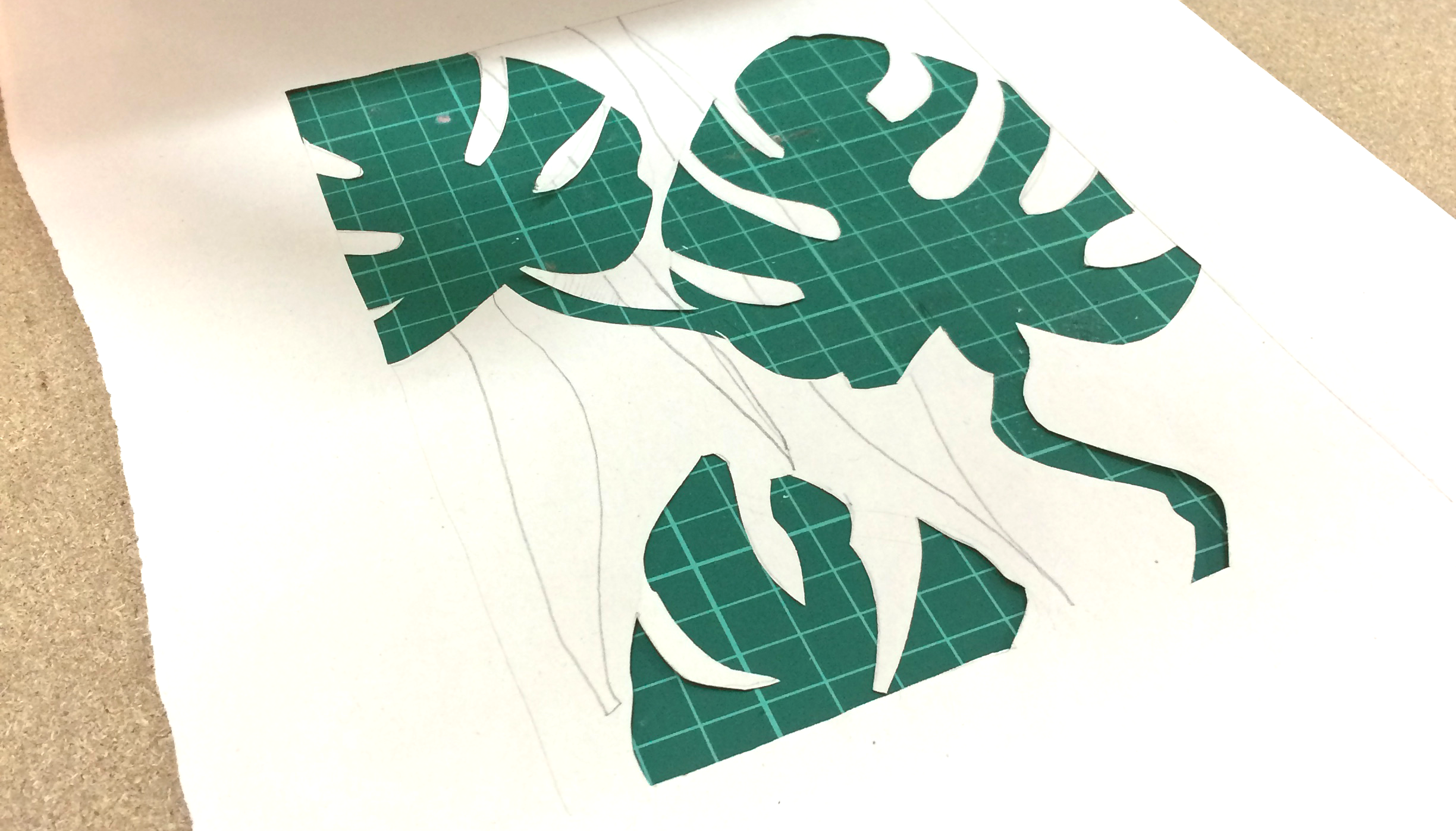Screenprint
Screenprinting is a stencil based process where ink is pulled through a fine mesh to create a series of flat, colourful layers. To create a design you need to cover up certain parts of the mesh either with paper, screen blocking fluid or light sensitive emulsion.
SCREENPRINT TECHNIQUES:
HANDCUT STENCIL
You can create quick and cost-effective stencils by cutting out a stencil from newsprint or adhesive film using a scalpel. This works as a mask that blocks out the parts of the screen you don’t want to print and leaving sections open that you intend the ink to go through.


BLENDED INK
This is a fun technique where you put 2 or more different colours of ink next to each other on the screen and pull them through together to create a blended/marbled effect.
CRAYONS
You can use water soluble wax pastels to draw directly onto your screen and then apply clear printing medium to break down the colour in order to transfer your design to the paper. This is a slightly unpredictable technique but is a quick way of introducing calligraphic marks into your work.


HANDDRAWN ARTWORK
By applying a photosensitive emulsion to a screen you can expose and print highly detailed designs. You can produce hand drawn artwork in a range of opaque media such as Posca Pen, Indian Ink, Acrylic Paint, Sugar Paper, and China Marker.
DIGITAL ARTWORK
You can also digitally print artwork to expose onto your screens, which can be lines and shapes or photographs with a halftone filter applied.
As the photosenstive emulsion can’t handle gradations of tone the files need to be setup as highly contrasted black and white designs, creating shades of colour through cross hatching or a bitmap (halftone) matrix.
